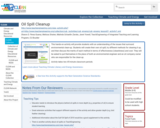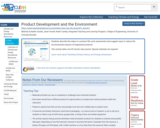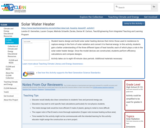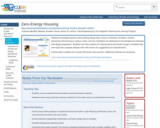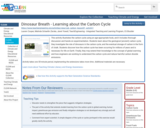
This activity illustrates the carbon cycle using an age-appropriate hook, and it includes thorough discussion and hands-on experimentation. Students learn about the geological (ancient) carbon cycle; they investigate the role of dinosaurs in the carbon cycle, and the eventual storage of carbon in the form of chalk. Students discover how the carbon cycle has been occurring for millions of years and is necessary for life on Earth. Finally, they may extend their knowledge to the concept of global warming and how engineers are working to understand the carbon cycle and reduce harmful carbon dioxide emissions.
- Subject:
- Applied Science
- Atmospheric Science
- Career and Technical Education
- Environmental Science
- Environmental Studies
- Physical Science
- Material Type:
- Activity/Lab
- Provider:
- CLEAN: Climate Literacy and Energy Awareness Network
- Provider Set:
- CLEAN: Climate Literacy and Energy Awareness Network
- Author:
- Janet Yowell
- Lauren Cooper
- Malinda Schaefer Zarske
- TeachEngineering - Integrated Teaching and Learning Program, CU Boulder
- Date Added:
- 06/19/2012
